
- Guitars
- GUITAR EFFECTOR
- Foot controllers / selectors
- One Control/MS PB Junction Box w BJF Buffer
One Control / MS PB Junction Box w BJF Buffer
With two inputs and two outputs, this little box functions very simply, but it creates a tremendous effect.
If you have Inputs and Outputs on your pedalboard...
The pedalboard is like a single effects pedal, connect the cables from the guitar and the amp, and you're set.
Of course, you don't have to spend extra time when you leave the stage either.
And if you have a buffer...
A buffer at the input of the pedalboard can reduce signal changes due to subsequent terminal contacts and cable lengths, including patch cables.
It can also be used as an output buffer instead of an input buffer.
BJF Buffer
The BJF Buffer is an overwhelmingly natural buffer that overturns the image of many buffers.
The BJF Buffer is a natural buffer that defies the image of many "buffers.
The input impedance should not change the sound.
The output should not be too strong.
Noise should be kept to a minimum.
The sound should not deteriorate when overloaded.
The BJF Buffer has fulfilled all of BJF's requirements for a buffer and is now at the fingertips of many professionals worldwide, helping them with their guitar signals.
While most effects are stronger when connected later, the buffer has more effect when connected earlier. This is why the BJF Buffer is built into the input section: with the BJF Buffer turned on, it helps stabilize the overall tone to a warmer, more natural tone. Of course, the BJF Buffer can also be used as an output buffer according to the characteristics of the effects on the pedalboard.
POLARITY/REVERSE
The sound of a musical instrument is a wave that travels through the air. The number of vibrations is the pitch of the sound, and the width of the vibrations is the volume of the sound. The sound of a musical instrument is the mixing of multiple waves to create a specific sound.
Phase is simply the position where the waves begin. Even if the waveform is the same, changing the position where it starts can drastically change the movement of air at that moment.
If only one sound exists, a phase does not significantly affect the timbre. However, when multiple sounds, i.e., instruments such as guitar and bass, are combined, the phase difference will affect the sound.
If you listen to sounds with the same waveform but an inverted phase at the same distance from the sound source, the waveforms will cancel each other out, and you will not be able to hear the sound. On the other hand, if sounds with the same waveform and phase are heard at the same distance from the sound source, the waveforms will overlap, and the sound will be louder.
The cancellation and overlapping of these waves make a big difference between the "outgoing" and "inaudible" sounds of the entire band ensemble.
The POLARITY/REVERSE switch is used to restore the phase, which may be inverted due to equipment characteristics or to match the phase of other parts. The theory may be complicated, but thinking about it too hard is unnecessary. Just play the sound as an ensemble at rehearsal, etc., and set it to the one that sounds better. By doing so, you can change the "sound through" and "sound power" of the entire band.
To make the most of your pedalboard
Except for some expensive models, most pedalboards have high board edges, so if you place effectors at the board's edge, the cable plugs may get caught on the edge, and the pedals may float. Stepping on a footswitch in such a state can lead to cable or pedal failure. For this reason, many pedal boards can only be used in a smaller area than their original size.
The Pedal Board Junction Box with BJF Buffer has the inputs and outputs located on the top surface of the enclosure, so they can be placed exactly in the corners of the pedal board without damaging the cables and wasting space on the pedal board.
Of course, the extremely compact design ensures that the Pedal Board Junction Box with BJF Buffer does not take up too much space on your pedal board.
Preventing unnecessary problems
Live performances can be very hectic. Things that can normally be done as a matter, of course, may not be possible when you are in a hurry or a hurry.
The Pedal Board Junction Box with BJF Buffer allows you to move the input/output locations according to the stage configuration without changing anything on the pedal board. This prevents unnecessary problems.
Prevent cable tangling
At a live performance, there is a lot of equipment on stage. It is not unusual for the amp inputs to be located right behind the guitarist or bassist. Normal pedal boards have inputs on the right and outputs on the left, so it is common for cables to get tangled up while moving around during a live performance.
The Pedal Board Junction Box with BJF Buffer allows the inputs and outputs to be in the same position on the pedal board, making it easy to position the cables to be crawled. This, in turn, helps to prevent cable tangling on stage.
Works great even with small boards!
The Pedal Board Junction Box with BJF Buffer is very small in size. The Pedal Board Junction Box with BJF Buffer is very small, making it ideal for small boards and large systems!
How to use
BUFFER/PASSIVE switch: Turns the buffer on and off; in PASSIVE mode, the buffer is off. Use in PASSIVE mode when no power supply is connected.
POLARITY/REVERSE switch: Inverts the phase between the BUFFER IN and OUT terminals. This switch operates only when the BUFFER/PASSIVE switch is on the BUFFER side.
9V IN: Connect the power adapter. Use the standard center-minus DC 9V terminal. Be sure to connect the power supply when using the buffer. The center LED lights up when the power supply is properly connected.
When the Buffer is OFF, both A and B terminals can be connected from any direction.
When Buffer is ON, the A terminal must be connected so that the signal enters from BUFFER IN and exits from BUFFER OUT.
94D x 38W x 32H mm (excluding protrusions)
94D x 46W x 40H mm (including projections)
Input impedance: 500 kΩ (Buffer ON)
Output impedance:60Ω (Buffer ON)
Weight: 220 g
Current consumption: 3mA
Power supply: Center-minus DC 9V adapter
Batteries are not available.
関連記事
関連商品
-
¥15,800(incl. tax)
 In Stock
In Stock -
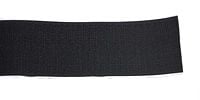 One Control / HOOK & LOOP - HOOK 1m
One Control / HOOK & LOOP - HOOK 1m¥380(incl. tax)
 In Stock
In Stock
商品レビューProduct Review
2025/03/25
![]()
![]()
![]()
![]()
![]() バッファーの効きは自然で良いです
バッファーの効きは自然で良いです
投稿者名Reviewed by:としやんbass 【埼玉県】
3社のバッファーを所有しています。中には高域がキツくなり耳障りなものがあります。
こちらのバッファーは素直で自然な効きなので扱いやすいです。
バッファーの効果を確認するために下記の配線で試しました。
パッシブベース→3mケーブル→本品→ループ部分にはエフェクターの代わりに3mのケーブル→7mケーブル→オーディオインターフェース
つまりバッファーからケーブル10mでの効果の有無を確認しました。
効果覿面でした。鮮明な音色が復活しました。特に感じたのはスラップのサムピング時の倍音です。バッファーオフ時はボコボコしていた音が明瞭になりました。プリングオフも勿論パキパキ良い感じに蘇ります。モジュレーションも綺麗に再現しました。
ジャンクションボックスにバッファー機能を付加してこの価格は好意的ですね。非常に満足です。
レビューIDReview ID:67e253dcdb9c6400400002ab
2024/05/09
![]()
![]()
![]()
![]()
![]() 場所を取りません
場所を取りません
投稿者名Reviewed by:60の手習い 【兵庫県】
エフェクターボードを新たに組むのに、先頭にこれを咬ませました。とにかく小さいので、邪魔になりません。
バッファーの効果はあんまり良く分かりませんが、特に不自然になることもなく。多分効いてるのではないでしょうか。
レビューIDReview ID:149408
2023/04/09
![]()
![]()
![]()
![]()
![]() 合理的
合理的
投稿者名Reviewed by:Po Dune 【神奈川県】
ジャンクションBOXの購入を検討していた時にBJFバッファ搭載モデルが発売されたと知って即買い。
バッファは一番先頭に置くのでチューナーに搭載されているのが合理的だと思ってましたが、ジャンクションBOXへの搭載とは良く考えたものです。絶対に一番先頭に置くものですからね。
トゥルーバイパスのペダルをたくさん直結した状態でバッファの効果を確認しましたが、減衰がほとんどなくなり効果絶大です。しかもスイッチで簡単にOn/Offできるので簡単に比較できますし、BJFバッファ非搭載のモデルと1,000円しか変わらないので絶対にこちらが買いだと思います。他のバッファを使うことになってもOffにすればいいだけなので。
一つ残念だったのはDC OUTが付いていないことですね。このジャンクションBOXのために給電しなくてはいけないので、これだけのためにパワーサプライ の一端子を消費してしまうのがもったいない。
見た目も高級感あるので超オススメです。
レビューIDReview ID:139031
2023/03/15
![]()
![]()
![]()
![]() このタイプのジャンクションボックスでバッファードは珍しい
このタイプのジャンクションボックスでバッファードは珍しい
投稿者名Reviewed by:北4順 【愛知県】
ハンドメイドな「上面が入口出口なこのタイプのジャンクション」を複数所持、使用しており、その便利さ、機能美からマルチエフェクターしか入ってないボードにまで使ってしまうのだが、意外なほどこのタイプのバッファー付きは見かけない。
たまたま見かけちゃったから「ローインピーダンス変換ジャンクション」という意味合いでこちらを購入。
質感もよく、アクティブでもパッシブでも音質変化は感じられず、まぁ自分の思惑通りではあるのだが、わざわざ電源を増やしてまでこれは・・・というほどのバイパス機材であり、すでにインピーダンスを考慮したエフェクター配列をしている人には無用の長物であろう。位相反転スイッチは確かに何か変化する・・・けど、そもそも裏返ったところでなにか?という部分なのでね、フェイザーなんかの周期物で試すと違いが出るのかもしれないが。
とはいえ頻繁にON/OFFするトゥルーバイパス機材を先頭に使う人がボードを組む、とかLなボリュームペダルの位置を先頭にも使いたいとか・・・インピがどうこういちいち考えるの疲れちゃう・・・そんな場合にはこの入口出口は有効だ。精神が安定する。
レビューIDReview ID:138348
2024/04/23
![]()
![]()
![]() BJFバッファを使うと
BJFバッファを使うと
投稿者名Reviewed by:うし 【東京都】
自分の環境では電源ハムっぽいひどいノイズが乗ってしまいダメでした。パッシブで使用する分には何の問題もありません。上向きについてるジャックは使い勝手が良いですね。
バッファそのものより位相反転機能に期待していたので大変残念ですがパッシブで使い続けるつもりです。
レビューIDReview ID:148955
不適切な投稿として報告しますか?
理由
ご協力ありがとうございました
投稿を削除しますか?
投稿されたレビューを削除しました。
One Control
MS PB Junction Box w BJF Buffer
Item ID:314129
4,400 yen(incl. tax)
44Pt(1%)Detail
- 44Pts
通常ポイント
- 44Pts
Total
- In Stock
- In Stock, can be shipped when order is confirmed.
- Low Stock
- Low Stock, may be sold out soon.
- Scheduled date
- Expected to arrive at Sound House on this date.
- TBA
- Expected date of arrival at Sound House to be determined.
- Back Order
- It needs to be orderd from the manufacturer. Please inquire about the estimated date of arrival.
- Mfr. Delivery
- Must be ordered from manufacturer. Please inquire about the estimated date of arrival.
- Download
- Only the serial number will be sent to your registered email address.
- Special Order
- Made to order item or must be ordered from manufacturer. May take several weeks or months.
- No Longer Available
- Product is no longer available due to having been discoutined or other reasons.
Rating![]()
![]()
![]()
![]()
![]()





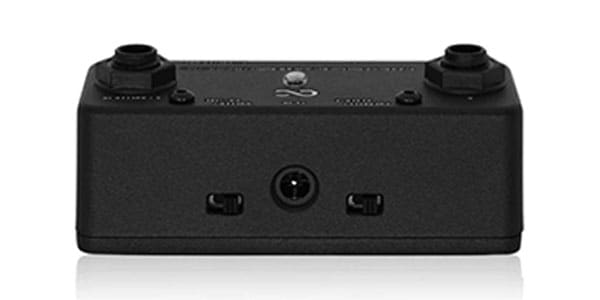
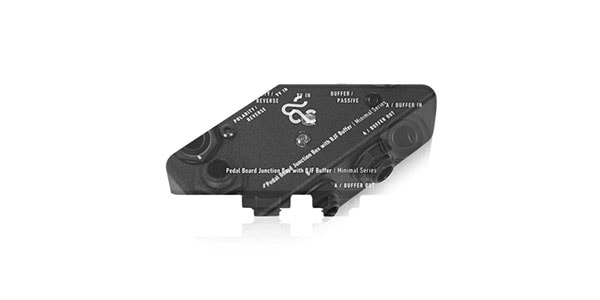
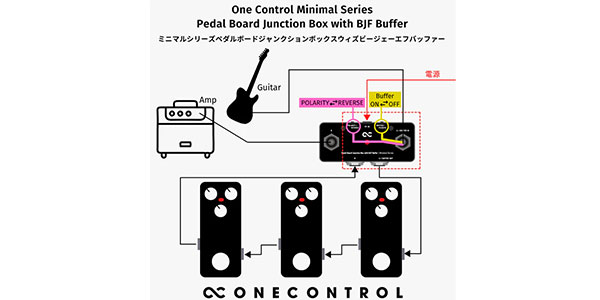


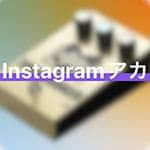
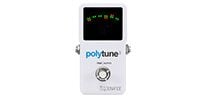 TC ELECTRONIC / Polytune 3
TC ELECTRONIC / Polytune 3








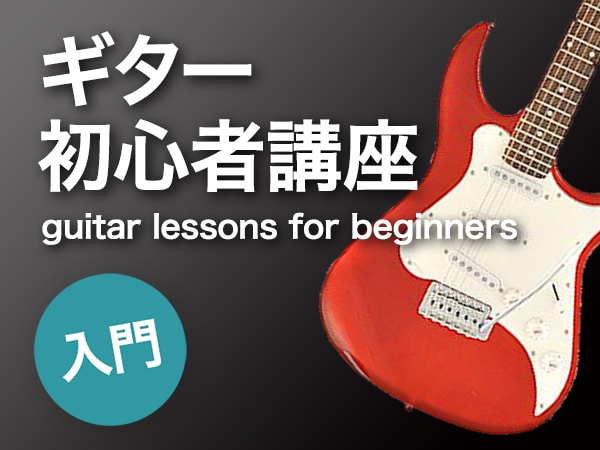
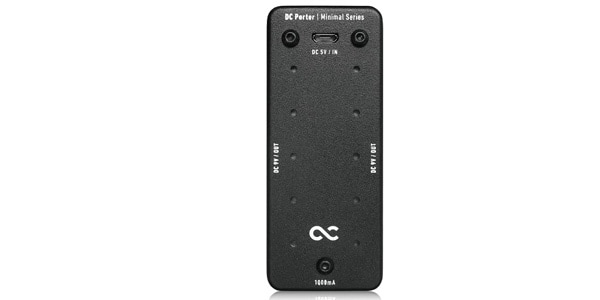


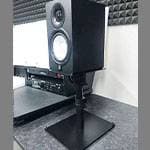







すべてのレビューを見る